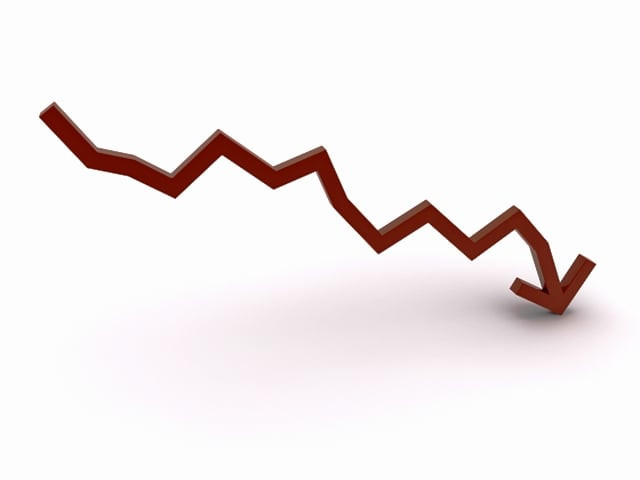
Pakistan’s GDP growth has been the lowest in the South Asian region since 2008. The core cause of the crippled economic growth has been the massive financial indiscipline of the current financial managers. The fiscal deficit (as a % of GDP) has been constantly above 6% since 2008. The government has been funding the ever growing deficit by Debt and printing money.
The increasing demand of the government to fund its deficits have resulted in a total debt of Rs10 trillion (up from Rs5 trillion in 2007). The data released by the State Bank of Pakistan indicates that broad money supply growth (M2) has averaged 11.5% over the past three years.
The recently released “Quarterly Performance Review of the banking system 2010” by the State Bank of Pakistan indicates that there has been growing evidence of banks’ flight for the government securities which now constitute around 30.4 per cent of banks’ assets compared with 19.3 per cent in Dec-08. Share of advances has witnessed a concomitant drop, from 60.8 to 52.0 percent during the past two years. Unsurprisingly, return on government paper now accounts for 34.5 percent of banks’ gross mark-up/interest income, compared to 28.8 percent in Dec-08.
Consequences
The currently prevailing interest rates are significantly beyond the comfort zone of the business community. As a result, the business community looks to consolidate and defer their projects that require significant capital deployment. It is very important to note that despite high interest rates prevailing in the country, the inflation rate has been soaring and no respite is expected in the short term as the government continues to borrow from the State Bank to plug their funding gap. It is very safe to assume that currently our economy is in the state of stagflation and it is expected to remain so in the short run.
The long-term consequences of ongoing budget deficits are drastic and will be felt in times to come. Firstly, the current budget deficits are not as a result of deficit spending towards Public Sector Development, instead only Rs300bn out of the budgeted Rs610bn were spent by the government in the previous year (as opposed to the case in India where the budget deficit is a result of massive Public Sector Development Spending). As a result, the infrastructure development necessary to promote economic growth remains ignored in toto. It is a matter of grave concern that the government has not been able to fully utilise the allocated PSDP fund over the last three years.
On the other hand the crowding out of private sector lending has impacted the private sector investment in infrastructure projects severely. A classic example is the delay in a number of power projects undertaken by the private sector. Data from various banks suggest that there has been on average 2-3 years of delay from the scheduled timeline for such projects to get commissioned. The result is the prolonged power outages and expensive electricity. If the current scenario prevails, Wapda expects that the power suffering could continue beyond 2018, not to mention the economic loss associated.
Bottom line
The bottom line is that unless the government takes strict measures towards spending cuts, seize additional borrowings, and utilize the deficit spending towards the infrastructure development, our economic nightmares will continue.
The writer is an Investment Banker by profession
Published in The Express Tribune, July 25th, 2011.


















COMMENTS
Comments are moderated and generally will be posted if they are on-topic and not abusive.
For more information, please see our Comments FAQ